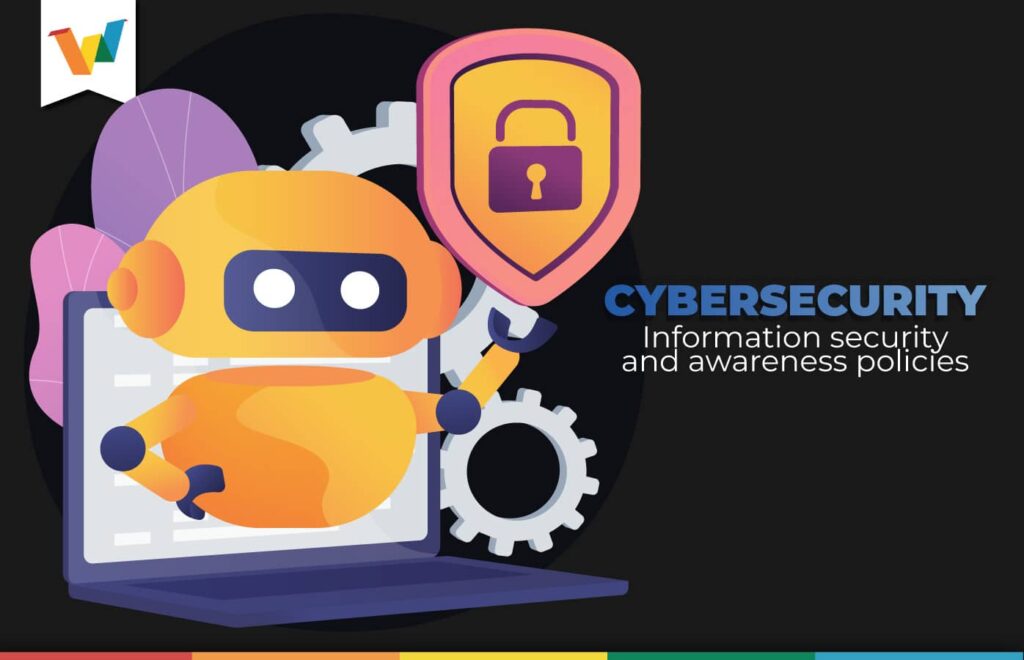Security and data protection, nowadays, is a topic that gives a lot to talk about. At present everything is digital, from the purchase of a good or service to the ease that banks offer to carry out operations, everything is within reach of a click, and with it, all your data, passwords, addresses, and more.
If you have already reached this point, Welcome! You will know about the importance of cybersecurity, data protection, and everything that cybersecurity can guarantee you.
Are you a company or government entity and are you concerned about the data you handle? You are also interested in this article where Ignacio Íñigo Hernández, a cybersecurity specialist, will explain everything you need to know about how to protect your data and that of your clients.
Cybersecurity and what you need to know …
In an environment where “everything you post can be used against you” cybersecurity appears an aspect that is useful when privacy in this era is almost nil.
That is why Ignacio explains that confidentiality, integrity, and availability are the basic aspects that guarantee cybersecurity. In this sense, we understand that there are different levels of security, ranging from a secure password to the biometric factor. Also, Ignacio mentions that: “Authentication systems are generally classified into 3 categories: those based on something you know (password, pin, etc.), those based on something you have (identity card, smart card, etc), and those based on something you are (usually biometric factors). The most secure systems today combine at least 2 of these categories. These systems are known as multi-factor authentication ”.
Cybersecurity in the business and government context…
At these levels, the first thing that must be carried out is animpact analysis, which includes a risk assesment, to measure which assets are crucial for the organization and protect them the best way we can. These preliminary studies help to direct the investment protecting the most valuable assets of a company.
Here, the terms Due Care and Due Diligence come into play. The first refers to the use of minimum reasonable care to protect the interests of an organization. While “Due Diligence” is taking the necessary measures to ensure due care. A factor to take into account, since managers must prove that they practiced due care and due diligence to reduce their culpability and limit their liability.
Now, at the time of designing a security plan, a risk analysis produces a cost-benefit report that can be use to decide if implementing a certain security control is worth it.
How do you build a security plan?
The first step to implement a security plan is the definition of a security policy or policies, which defines the scope of security within an organization, the assets that must be protected, and what level of protection is acceptable.
Then, based on that policy, other documents are created, such as standards, baselines, guidelines, and procedures.
It is worth mentioning that, depending on the industry or sector to which the company is dedicated, the internal policies of an organization can be influenced by the regulations of the country or region where it is located.
How is a data security policy structured?
Ignacio explains that a policy must have a purpose, and indicates why it is necessary to protect the confidentiality, integrity, and availability of data. Second, it must have a scope, clearly indicating everything that must be protected (Systems, data, people, real estate). Third, it has to contemplate responsibility, that is, define who is responsible for what, define roles, etc. Finally, it needs to document compliance, that is, indicate what happens when the policy is violated and the associated sanctions.
“Too many times, policies, standards, baselines, guidelines, and procedures are created as a follow-up action recommended by a security consultant or auditor. If these documents are not used and updated regularly, they will not help protect the organization and therefore will lose their usefulness. ” Explains Ignacio, who at the same time mentions that security policies should be reviewed and updated at least once a year, or even more frequently especially if there is any important change within the organization.
Finally, Ignacio makes it clear that: “It could be said that every policy should have teeth, or rather fangs, referring to the fact that in some way it must warn of the consequences of not complying with it, to be effective.” And it is that, in the end, as long as everything is well documented and each of the parts of a company is aware of its functions, the range of error will be less and less.
A policy is accompanied by awareness and education programs, since a policy is more than just a document but a guide to reduce cyber risk and ultimately to prevent loss of capital. Therefore, a company with a good training program will reduce risks.
This should not only be taken into account at the business level. Despite the regulations and cybersecurity laws that are implemented in different countries such as the United States, Panama, or the European Union, cyber risk continues to be an issue, as security practices still need to be strengthened.
If you have reached this point, you will realize the importance of data protection in the present, we know that risks will always exist, but if you can help minimize them, you will be even safer.
Browse our blog to learn a little more about cybersecurity #WeBlogIt







